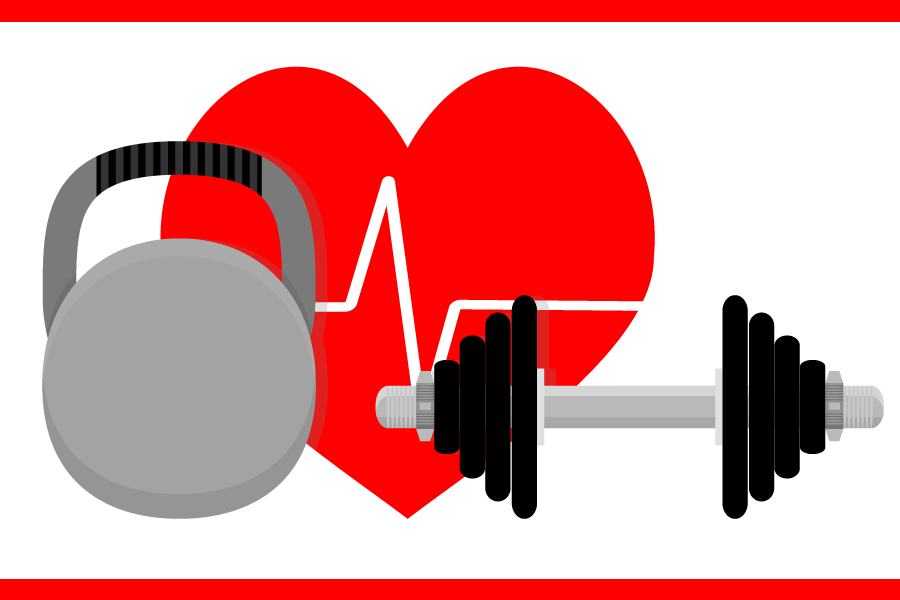And the beat goes on! Heart month is a great time to reflect on the importance of heart health. Heart Disease is still the number one cause of death in America.
Here’s what we know and what we can do for heart health (source www.heart.org):
- Get Active. (CFit has you covered!)…Along with gaining strength and stamina, regular physical activity can lower blood pressure, keep body weight under control and lower your LDL — otherwise known as “bad” cholesterol. Regular physical activity is also associated with lower risk of type 2 diabetes, reduced depression, improved bone density, and improved sleep quality for adults.
- Control Cholesterol. We all have cholesterol, a waxy substance in the bloodstream and in the cells of our body. But despite its reputation, cholesterol isn’t all bad. In fact, it plays an important role in keeping us healthy. But a balance must be struck to prevent too much cholesterol in the blood. There are two types: the “good” kind (HDL) and the “bad” kind (LDL). High levels of bad cholesterol can clog your arteries, increasing your risk of heart attack and stroke. This is where good cholesterol comes into play: HDL cleans out that bad cholesterol from the arteries.
- Regular physical activity, limiting saturated fat by limiting red meats… (instead choose) …healthier fats such as certain vegetable oils can help adults who need to lower LDL cholesterol levels. It’s also important to limit (or eliminate) trans fats, too.
- Eat Better. Eating the right foods can help you control your weight, blood pressure, blood sugar and cholesterol. Follow a dietary pattern that includes fruits, vegetables, whole grains, and other healthy choices.
- Manage Blood Pressure. About 33 percent of American adults have high blood pressure — yet about 14% of adults 60 years and older don’t even know they have it. That’s because high blood pressure, “the silent killer,” has no symptoms. Keeping your blood pressure in a healthy range starts with eating a heart-healthy diet. Other important factors are exercising regularly; maintaining a healthy weight; limiting salt and alcohol; and taking medication prescribed by your doctor.
- Maintain a Healthy Weight. Overweight and obesity are risk factors for cardiovascular disease. In the US, 69% of adults are either overweight or obese. Higher body mass index (BMI) is associated with higher risk of type 2 diabetes and obesity is a strong predictor of sleep disordered breathing. For overweight or obese adults with other cardiovascular risk factors (such as high blood pressure), maintaining a weight loss of 3-5% of body weight can produce clinically meaningful results. Greater weight loss can produce even greater results on BP, cholesterol levels, and blood sugar.
- Reduce Blood Sugar. Diabetes is a risk factor for cardiovascular disease. Heart disease death rates among adults with diabetes are 2 to 4 times higher than adults without diabetes. You can minimize the impact of diabetes on your body — and even prevent or delay the onset of diabetes — by eating right, controlling your weight, exercising and taking medication prescribed your doctor. In some cases, lifestyle changes result in less need for medication.
- Stop Smoking. It’s time to kick the habit. Going smoke-free can help reduce risk of heart disease and stroke, but also cancer and chronic lung disease. The payoff is almost immediate. Quit smoking and you’ll lower your excess risk of developing heart disease and stroke within only a few years.
Many decades ago, Dr. Kenneth Cooper coined the phrase “aerobics” for activities that benefit your cardiovascular system. Heart health and exercise obviously go hand in hand. We have mentioned before that; “even though Cardio (equipment) reigns King or Queen, there is a new Sheriff in town”. When considering cardiovascular and respiratory fitness, you should also consider circuit training performed at a good clip and a decent intensity. HIIT (High Intensity Interval Training) can easily be found on our Group Ex Class Schedule. Also, for those that want some extra motivation and the watchful eye of a fantastic Trainer, for a small fee, you can join any of the BootCamp or Fusion Small Group Training Classes. There are many ways to pump up your cardio fitness – just ask!
This article is intended to be provide knowledge of general health and fitness principles and is not medical advice. Please consult with a physician if you have questions.


Recent Comments